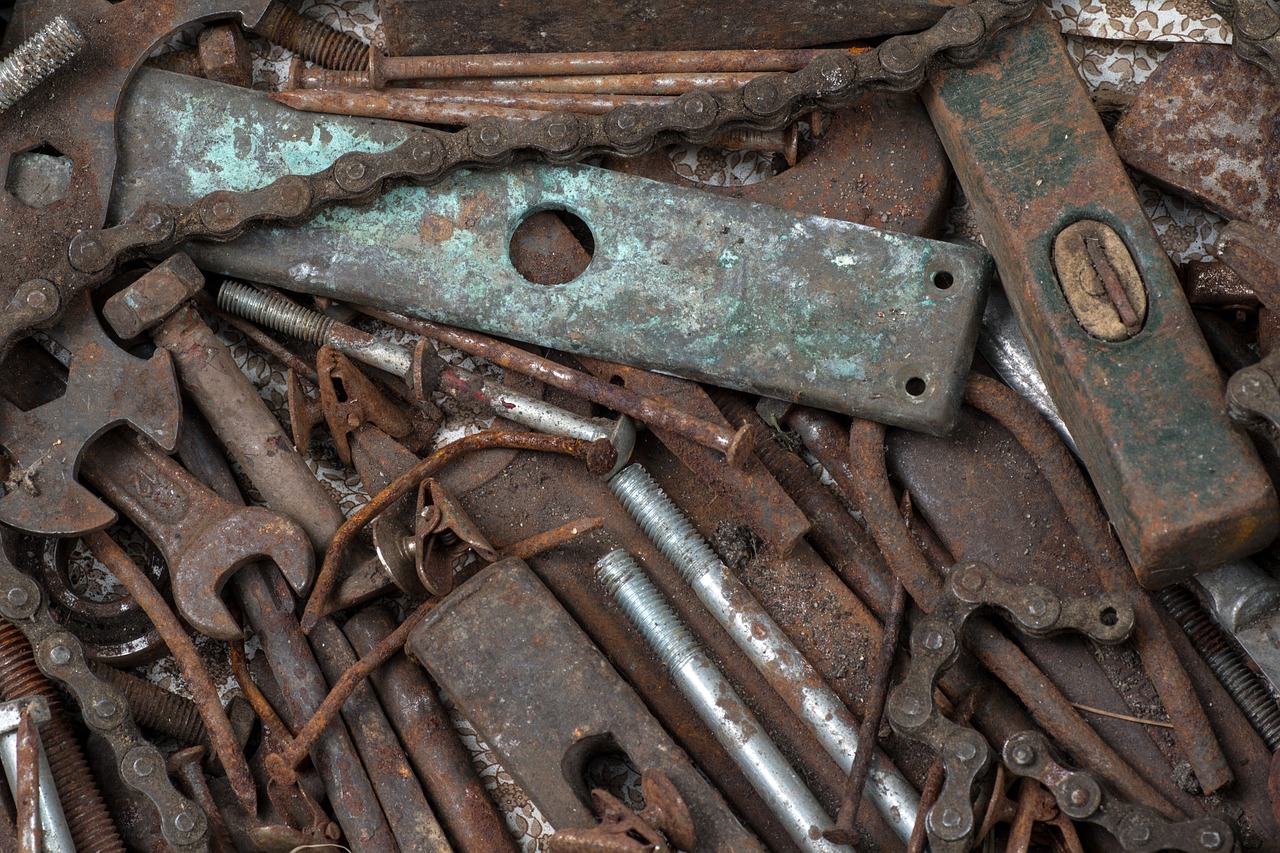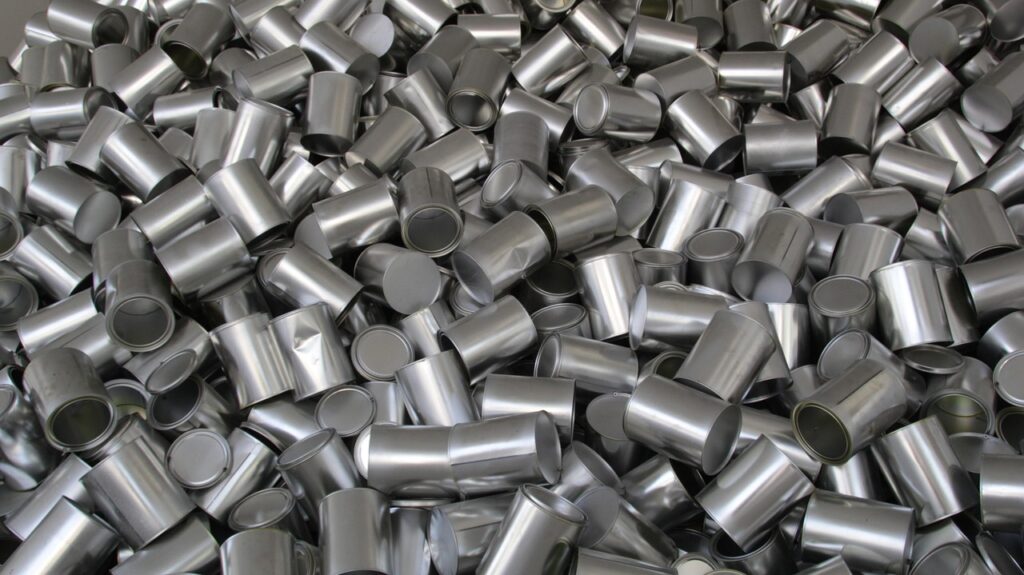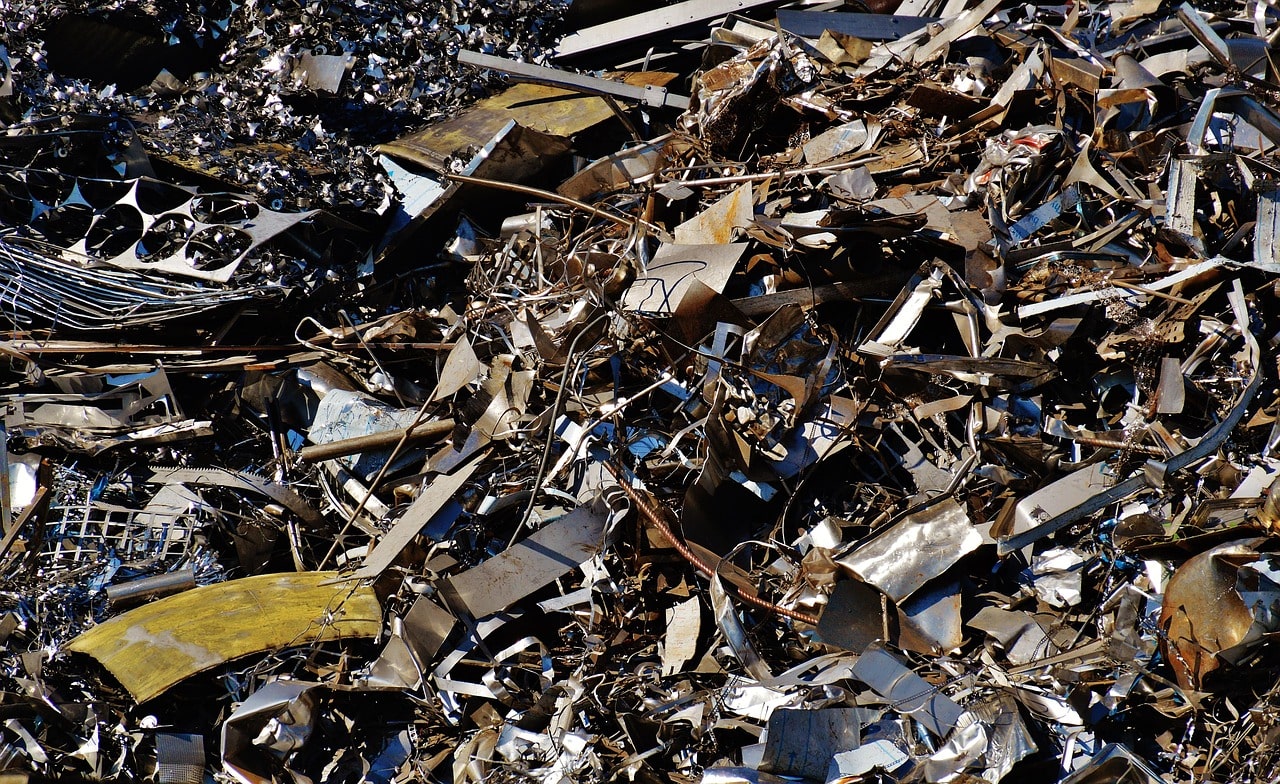The scrap collection or recycling world divides scrap into two main categories: ferrous and non-ferrous. This classification is not scientific – it affects how metals are recycled, how much they are worth, and where they are used in our daily lives. When we think of scrap, we immediately think of the scrap metal found in vehicles, the wires running through the walls of our homes, and all the debris from large buildings. But the scrap world divides it into two categories: ferrous and non-ferrous. Here we take a look at what ferrous and non-ferrous are, how they differ, and how much they are worth.
Ferrous Metal
Any metal object containing iron is called ferrous. The ferrous scrap includes various metal products that are primarily made of iron and alloyed with other elements to increase strength or durability. The defining characteristic of ferrous scrap is its magnetic property, which makes it easy to identify with a simple magnet. Another notable feature is its tendency to rust or corrode in moisture due to its iron content.

What is Ferrous scrap?
Ferrous scrap is abundant in our daily lives. Automobile bodies, steel beams from collapsed buildings, railway tracks, industrial machinery, washing machines, refrigerators, and rusting wires often become ferrous scrap at the end of their useful lives. Ferrous metals are widely used in construction, infrastructure, automotive manufacturing, and industrial equipment because they offer high tensile strength and durability, so ferrous scrap is available in abundance.
After scrap collection, the sorted ferrous scrap is sent to recycling plants, where it is melted down and reused in the manufacture of new steel products. This not only conserves natural resources such as iron ore, but also significantly reduces energy consumption and carbon emissions compared to producing new steel from raw materials.
Ferrous metals, which are rich in iron, have high strength, durability, and magnetism. This makes them suitable for a wide range of uses, from electrical appliances and construction to shipbuilding and heavy machinery. Common uses include skyscrapers, bridges, rail infrastructure, motors, and generators. Although they are susceptible to corrosion, protective measures such as coatings and plating can help them last longer. Ferrous metals are often heavier, less dense, more magnetic, and more malleable.

Non- Ferrous Metal
Non-ferrous scrap includes all metals that do not contain iron. These metals are generally lighter and more corrosion-resistant than ferrous metals, and are not magnetic. Their resistance to rust makes them suitable for use in environments exposed to moisture or harsh environments. In addition to moisture, many non-ferrous metals offer excellent conductivity and ductility, making them valuable in the electrical and electronics industries.
What is Non-Ferrous Scrap?
Although less visible than ferrous materials, non-ferrous metals are also a common part of our everyday environment. These include metals such as aluminum, copper, lead, zinc, and nickel, which are characterized by their light weight, high conductivity, corrosion resistance, and non-magnetic properties. Common items in our daily lives such as copper wiring, aluminum cans, electronic circuit boards, plumbing pipes, and batteries often become non-ferrous scrap when they reach the end of their useful lives. As a result, they are widely used in electrical applications, aerospace, electronics, packaging, and special construction projects.
Once non-ferrous scrap is separately sorted, it is processed and smelted for reuse. Recycling non-ferrous metals is highly efficient and sustainable, as it typically requires much less energy than extracting and refining virgin ores. This process helps conserve scarce natural resources, reduces environmental pollution, reduces greenhouse gas emissions, and is also cheaper.
Non-ferrous metals, like aluminum, copper, and brass, are corrosion-resistant, non-magnetic, and don’t rust easily. They’re ideal for outdoor structures, marine environments, electronics, and plumbing. Their good conductivity makes them suitable for power transmission. Being lightweight, malleable, and ductile, they’re used in aerospace, automotive, and transportation. Non-ferrous metals are also more valuable on the scrap market due to their scarcity and high demand.
Difference between Ferrous scrap & Non-Ferrous scrap
The word “ferrous” comes from the latin word ferrom , which means iron. So, simply put, ferrous metals are metals that contain iron, while metals that do not contain significant amounts of iron are called non-ferrous metals.
Ferrous and non-ferrous scrap metals differ mainly in their iron content and physical properties. Ferrous scrap metals contain iron, which makes them magnetic, and are widely used in construction and manufacturing due to their strength and durability. In contrast, non-ferrous scrap metals do not contain iron, which makes them non-magnetic and more resistant to rust and corrosion. Common ferrous materials include steel, cast iron, and wrought iron, often obtained from cars, tools, equipment, and structural materials such as I-beams. They are recycled in large quantities. Examples include aluminum, copper, brass, lead, zinc, and nickel, which are commonly found in wiring, roofing, pipes, and aircraft parts.

